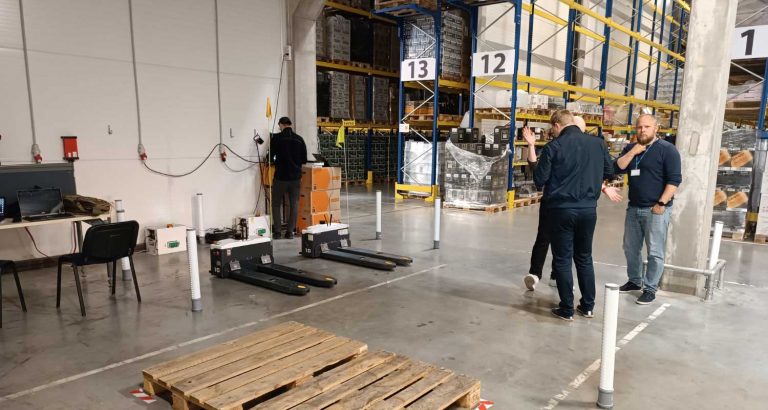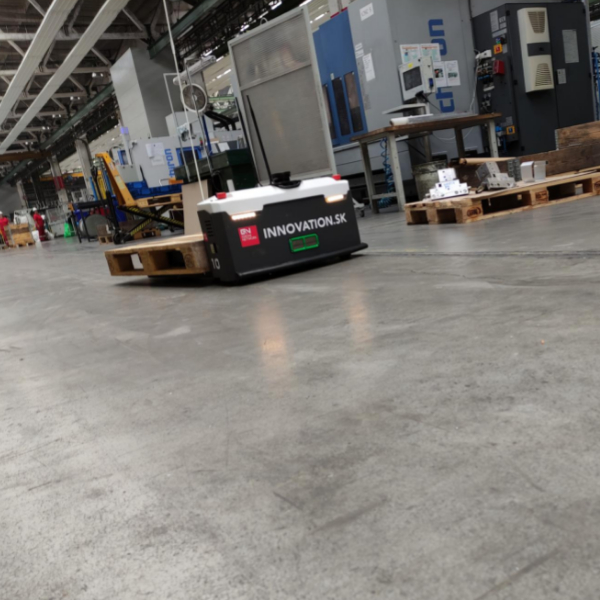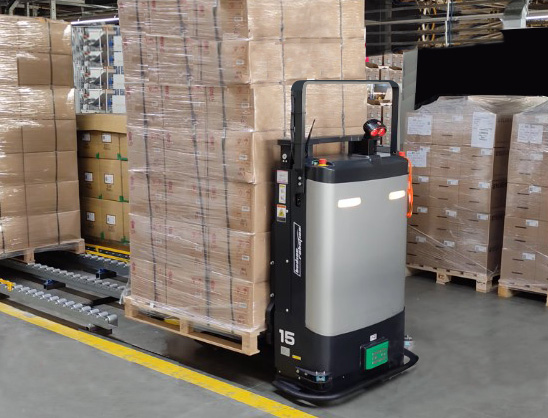Designing logistic AGV/AMR processes
The current era brings the rise of new technologies, the optimization of procedures and the automation of processes that facilitate the operation of production and logistics systems. These technologies also include AGVs – automatically guided vehicles and AMRs – autonomous mobile robots. With the help of these intelligent solutions, you can more easily manage the lack of operators, rising logistics costs, changes in logistics processes and the like. If you are considering the automation of your logistics systems, you will solve the following tasks:
- Analysis of handled goods and handling units
- Defining logistics circuits
- Proposal of work procedures for individual circuits
- Selection of suitable AGV/AMR technology
- Simulation and visualization of an automated logistics system

Analysis of handled goods and handling units for AGV/AMR technologies
In the first step of designing automated logistics processes, you need to analyze handled goods, which can be parts, finished products, auxiliary material, test samples, tools, etc. These goods and their handling units need to be segmented, resulting in the creation of certain groups. Basic information needs to be collected for each group:
- From where and where the goods are transported
- As often during a production shift
- What is the weight and dimensions of the given goods
- Where will it be transported (interior/exterior)
- How far the goods need to be transported, etc.
You will use this information when solving other tasks within the design of automated logistics processes.

Defining AGV/AMR logistics circuits
Another step in designing automated logistics processes is defining logistics circuits. In this step, logistics circuits are designed according to the collected input data. You will also come across solutions to the following tasks:
- Defining loading positions and unloading positions
- Defining zones for automated technology (AGV/AMR)
- Designation of zones for technologies controlled by operators, or common areas
- Defining direct or two-way streets
- Designing logistics circuits – logistics routes
For the defined logistics circuits, you will collect the necessary data for the following capacity calculations.

Draft work procedures for individual AGV/AMR logistics circuits
Another step in the design of automated logistics processes is the design of work procedures for individual logistics circuits.
- Defining the conditions for the creation of a traffic task, e.g.
- Occupancy of a pallet position, release of a pallet position
- Checking the pallet and restocking it
- Entering a signal by the operator, etc.
- Determining methods for sending created tasks to the AGV/AMR control system
- Physical button, Sensor, Tablet
- Code scanner
- Warehouse management system, etc.

- Defining work procedures as such, e.g.
- Go to the warehouse, load an empty pallet, transport it to the workplace and place it on pallet position A26, then move it to the waiting area or to the charger
- Chained procedures – take away a pallet with finished products and bring in an empty pallet
- Special tasks – take waste material from production to warehouse, etc.
Selection of suitable AGV/AMR technology and accessories
Another step in the design of automated logistics processes is the selection of appropriate types of AGV/AMR technologies, additional equipment, accessories, etc. During this activity, it is necessary to take into account:
- Size of transported loads
- Weight of loads
- Dimensions and types of handling units
- Storage of handling units (on the floor, on a conveyor, in a rack, …)
- Spatial possibilities and limitations, etc.
Based on the mentioned parameters, it is possible to select a suitable type of AGV/AMR technology and perform capacity calculations. The information processed in this way is then used to create an assignment for processing the price calculation of the proposed solution. If possible, we recommend to implement a pilot project and test the considered technology directly in your operating conditions before investing in AGV/AMR technology.

Simulation and visualization of an automated AGV/AMR logistics system
Another step in designing automated logistics processes is computer simulation and visualization of the automated logistics system. With the help of computer simulation, various operating conditions and situations are checked, for which separate simulation experiments can be carried out. Based on the provided outputs, it is possible to search and test optimization proposals. Computer simulation will confirm the correctness of the proposed solution. We recommend in this step to also process the visualization (run time simulation model, video, etc.) of the future logistics system. It will help you when presenting new intentions to your colleagues or representatives of partner organizations.

If you are facing a similar situation and need to move forward quickly (get information quickly, get advice quickly, get external support quickly), you can contact us:
- by phone +421 902 330 127
- by email info@innovation.sk
- or you can use our contact form here.
If you have already designed your new automated logistics process, you can start calculating the return of the designed solution. You will need the budgeted AGV/AMR project price for this calculation. If you are interested in processing the budget project price – use our online inquiry form (Online inquiry – Automation Innovation).
GET A 20% OFF COUPON FOR A PILOT PROJECT WITH TWO AMR ROBOTS!
We bring to your attention the opportunity to get a 20% discount coupon for a special AMR pilot project with two different AMR robots – the opportunity to realistically test different logistics strategies within one pilot project. The coupon is completely free and can be used at any time until the end of 2023.






